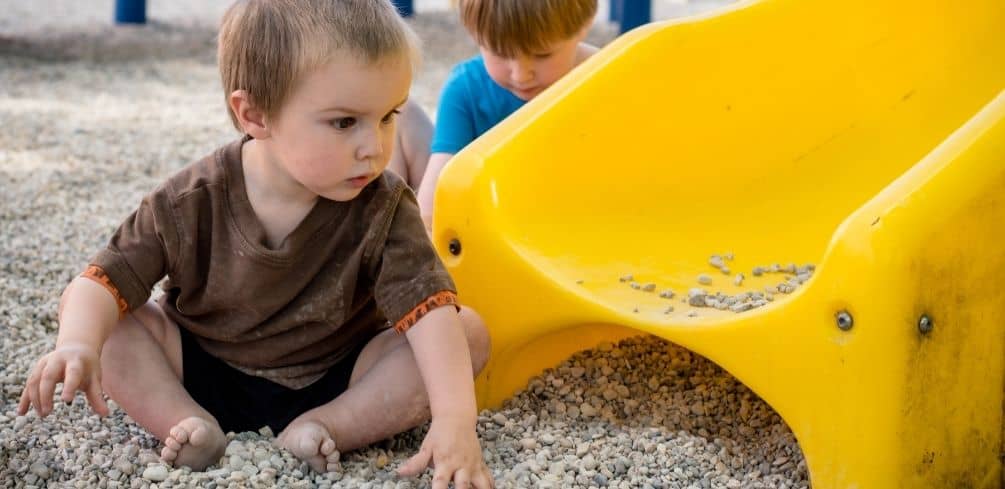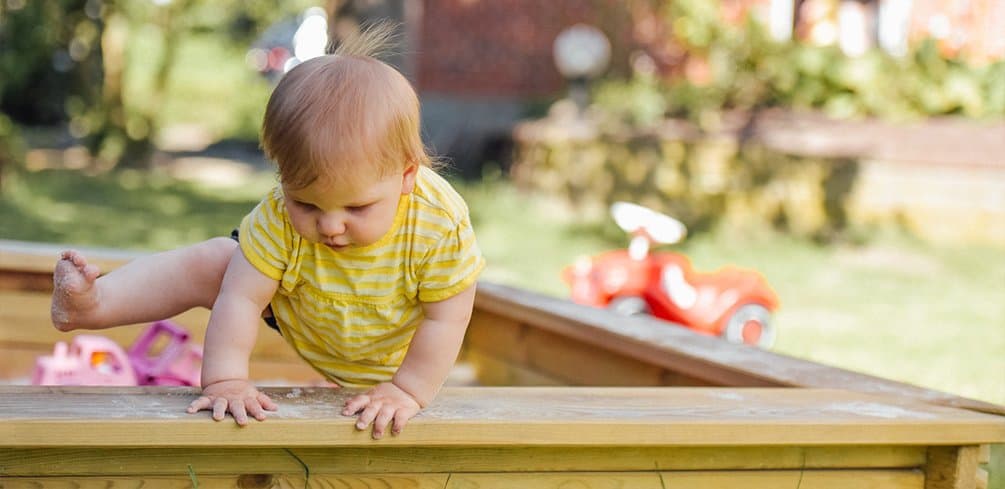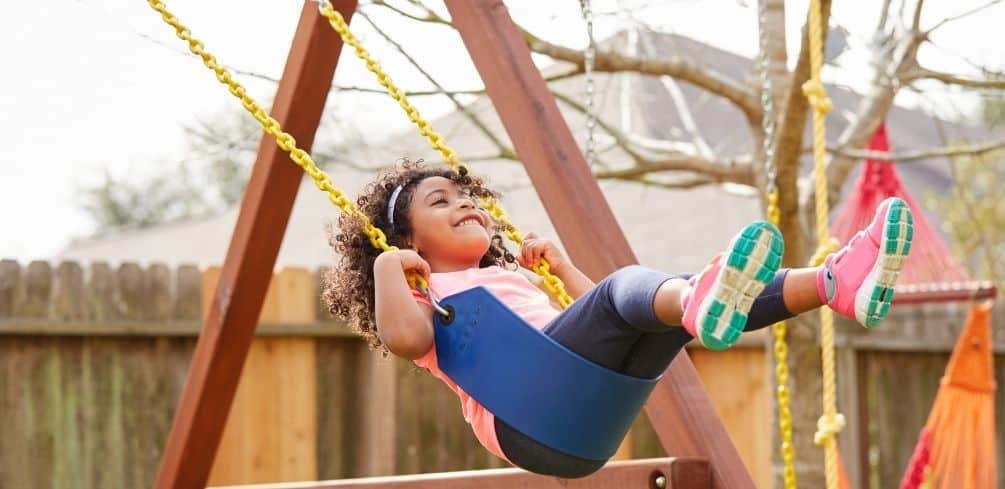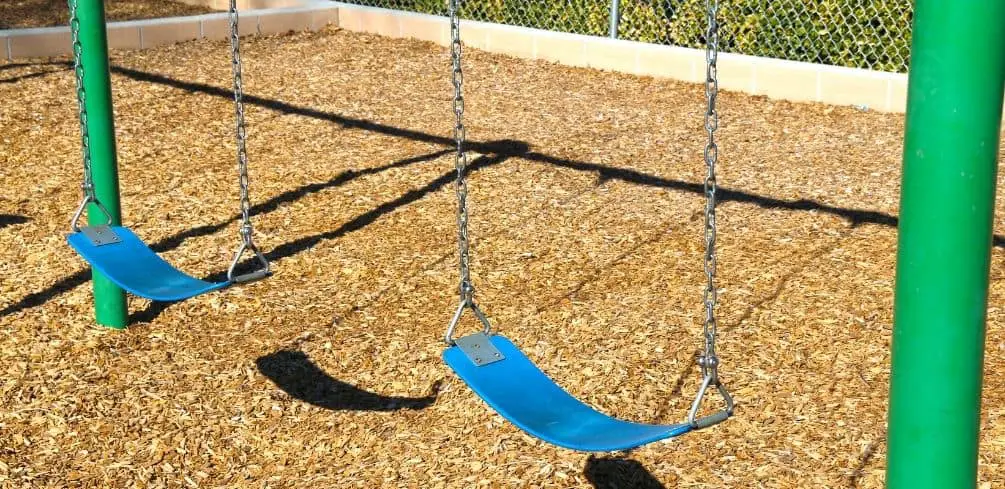Playground surfacing materials for playgrounds fall into two categories: Unitary and Loosefill materials. Unitary surfacing materials are fully bonded together to form a single unit. Examples of these materials include rubber mulch, poured-in-place surfacing, and particle-filled polymer. Loosefill materials include wood chips, engineered wood fiber, bark mulch, rubber crumbs, recycled rubber tire chips, gravel, and sand-based granules/pebbles.
It is important to have a safe place for children to play. A playground should be designed with safety in mind. One of the many ways to help provide a safe environment is by installing soft fall surfacing under the equipment.
Soft fall surfacing should meet the requirements of the U.S Consumer Product Safety Commission (CPSC) and the American Society for Testing and Materials (ASTM).
This blog post will go through some of the key playground soft fall requirements and regulations, so you know how to choose the right product for your child care center.
Types of Surfacing Materials for Playgrounds
According to the CPSC, surfacing materials for playgrounds can be grouped into two types: Unitary and Loosefill materials.
Unitary surfacing materials
These surfacing materials are those that are fully bonded together to form a single unit. Examples of these materials include rubber mulch, poured-in-place surfacing, and particle-filled polymer.
The CPSC categorically states that unitary materials have to be approved by the ASTM, so you cannot just use any rubber mulch for playgrounds. Also, when these materials crack or start developing holes, they must be replaced or repaired because loose pieces can be picked up by children.
Loosefill materials
These surfacing materials are those that do not need to be bonded together because they will remain in place on the playground. Since these materials are often displaced easily and migrate with use, the CPSC says that they shouldn’t be installed over a hard surface such as concrete or asphalt.
They also require some containment methods, such as a low fence or a shallow trench to prevent the materials from migrating throughout your child care center. There should also be a drainage system underneath these materials.
There are two types of loosefill materials:
Organic materials: These include wood chips, engineered wood fiber, and bark mulch. If there are any signs of weeds, mold, or insects, the materials should be replaced immediately.
Inorganic materials: These include rubber crumbs, recycled rubber tire chips, gravel, and sand-based granules/pebbles. They have to meet ASTM D6413 standards if they are intended for playground use. It is, however, important to note that gravel isn’t recommended for preschoolers as they tend to place the pea stones in body cavities.
Note also that recycled rubber tire chips come in different colors. Those that come in black can overheat in some climates, so care should be taken to avoid any burn injuries.
General Guidelines for Installing Playground Surfacing Materials
The material should have good shock-absorbing properties
Any playground surfacing material should have good shock-absorbing properties. It should be able to cushion a child’s fall and reduce injuries from falls on the equipment surfaces.
In the case of unitary materials, they must be approved by the ASTM.
Inches matter
If you are using loosefill material, there should be at least 9 inches of it for any playground equipment 7 feet high. For unitary materials, there should be at least a 9-inch layer for playground equipment 5 feet high.
If you have playground equipment less than four feet high, there should be a protective surfacing of at least 6 inches.
Have some containment
There must be some containment method such as a low fence, landscape edging, or a shallow trench to prevent loosefill materials from migrating throughout your child care center. There should also be a drainage system underneath the material.
Never install loosefill material on hard surfaces
As pointed out earlier, loosefill materials should be installed on a porous surface. Never install them over concrete or asphalt because they can migrate throughout your child care center and cause injuries.
When they migrate, your kid may fall on the bare hard surface and get injured.
Maintenance
You will need to regularly check the depth of the material to ensure it is at least nine inches deep. You should also regularly check for any signs of weeds, mold, or insects that can infest loosefill materials.
If there are such signs, the materials have to be replaced immediately.
For unitary materials, check for any cracks and replace them if necessary. You want to make sure that these materials are in good shape because they can cause injuries if their surfaces become too rough.
Tips for Installing Loosefill Materials
Loosefill materials compress over time
According to the CPSC, over time, loosefill materials often compress by at least 25%. This is something that needs to be considered when building the playground.
So, for instance, if you require 9 inches of material, you should install at least 12 inches of it to account for both compression and settling.
No more than one type of material is allowed per playground area
As far as the CPSC is concerned, no more than one type of loosefill material can be used in a specific play area because this could cause injuries when children are playing with different types of materials.
The material should never drop below the required depth
You are going to do a lot of regular maintenance to make sure that the material is always at least nine inches deep. But if it drops below this depth, you need to replace the entire area with new loosefill material or unitary surfacing materials, depending on your equipment’s height.
Special attention should be given to areas near slide exits and under swings as these are susceptible to more displacement.
Containment
Loosefill materials must be contained within the play area. So have some containment method such as landscape edging or a low fence.
No installation on hard surfaces
You cannot install loosefill materials over concrete or asphalt because they can migrate throughout your child care center and cause injuries when kids fall on the bare surface.
Drainage is important
You want to avoid standing water as much as possible as it will increase the chances of weed and mold growth. It will also increase the rotting and compactness of the loosefill material.
Do not use treated wood products
The CPSC advises against using treated wood products, mulch, and chips. This is because the chemicals used to treat wood products can leach into loosefill materials and cause serious injuries when children come in contact with them.
ADA requirements
Note that some loosefill materials may not meet the requirements of the ADA (Americans with Disabilities Act). So you may want to do some research or ask experts before installing loosefill materials on your play area.
Surfacing Materials You Should Never Use on Playgrounds
There are many types of surfacing materials that people use, but they shouldn’t be used on playgrounds. These materials can cause serious injuries in case of falls.
They include the following, among others:
Hard surfacing materials
You should never use asphalt, concrete, or any other hard surface around or under any play equipment of any height. However, you can use the surfaces as a base for shock-absorbing unitary materials.
Earth surfaces
Never use earth surfaces such as packed dirt or soil on play areas. When it rains, the soil will become saturated, and children can fall into large holes that form on these surfaces.
Plus, these surfaces just don’t have the required shock-absorbing capacity.
Turf and grass
This is another type of earth surface that should not be used in play areas. Like soil, grass and turf will become saturated when it rains.
Plus, they do not have the required shock-absorbing capacity to keep children safe in case of falls or accidents.
Grass seed is another material that should be avoided on playgrounds because when bare spots form due to wear and tear, germination can take place, which can create a safety hazard when children fall into these areas.
Treated wood mulch
The CPSC advises against using treated wood mulch and chips. You don’t want to use this material as it can leach into loosefill materials and cause health issues, including poisoning.
ADA-approved Playground Surfacing Materials
ADA approved several loosefill materials for use under and around playgrounds.
They include:
- Pea gravel
- Sand
- Wood chip, but not engineered wood fiber
- Shredded rubber
Pros and Cons of Some Loosefill Materials
Pea gravel
Pea gravel has good drainage. It does not attract animals or harbor weeds. It is also cheap and requires less maintenance.
It can, however, be hazardous when thrown at a person. Children also tend to place the pea gravel in their mouths, ears, and nostrils, which can cause serious health issues.
Sand
This material, sand also has good drainage. It is also cheap and requires less maintenance than other types of loosefill materials like wood chips and pea gravel.
However, cats love using sand as a litter box. Broken glass can also be buried in the sand, leading to a possible health hazard. When it freezes, sand can harden up, causing injuries.
Wood chip
Wood chip is inexpensive, easy to transport, and easy to find. Wood chips are soft, so children will not get hurt in case they fall on them.
This material is ideal for preschools that have young or smaller kids who may be less stable when walking around the play area.
However, this type of loosefill material is prone to rot, especially if it is not properly maintained. There is also a high probability of weed germination if wood chips are used.
So, you need to be aware of the type of grass that will grow in your play area. Also, up to 25% of this material needs to be replaced every year.
Shredded rubber
This material is cost-efficient. It does not require a lot of maintenance and does not rot or harbor weeds.
However, this material is difficult to transport compared with wood chips and pea gravel. Plus, children can place shredded rubber inside their mouths which may cause the development of health issues.
In hot temperatures, shredded rubber tends to off-gas. This can lead to health issues and cause dangerous gases in the air.
Soft Fall Materials FAQs
What materials are safe for surfacing playgrounds?
There are several materials that the CPSC has approved for use on playgrounds, including wood chips, pea gravel, sand, and shredded rubber.
Wood chips are a good choice if you want to keep costs low while still having a soft material under play equipment or around it.
Is it safe to use recycled tires in play areas?
The CPSC discourages the use of recycled tire pieces as these can contain harmful chemicals and substances that may cause health issues.
What kind of wood is best to lay down under a swing set?
You should avoid laying down treated wood products such as mulch and chips. These materials will get wet when it rains, which can lead to rot or leach into loosefill material, causing health issues.
Is processed rubber safe for playground use?
It is not advisable to use processed rubber because of the off-gassing that takes place in hot weather conditions.
What are the requirements for playground surfacing in childcare?
The CPSC sets specific requirements for childcare facilities regarding which materials can or cannot be used for surfacing playgrounds. As discussed above, there are specific materials that should be used.
Playgrounds in childcare facilities must have a surface that is at least 9 inches deep. The ground cannot contain any objects such as rocks, glass, metal, sharp edges, or hazardous materials.
What is the most affordable flooring option for a playground?
Sand, shredded rubber, and pea gravel provide good drainage but are relatively inexpensive. Wood chips may be cheaper than other materials but need to have 25% of them replaced yearly, making them more expensive in the long run.
How often should a child care facility’s playground be resurfaced?
You should resurface your playground as regularly as possible, especially if the surfacing material is wood chips/mulch.
What are some other resources?
Looking for even more information on this topic, check out these:
Final Thoughts
The safety of kids when playing outdoors should always be a priority. You also need to be aware of any safety requirements and regulations in your area when it comes to playground surfacing materials.
Hopefully, this article has provided you with enough information to get you started on the right track. Please check out our sandbox safety tips.
Please be careful and use at your own risk
None of the authors, contributors, administrators, or anyone else connected with BestPlaygroundSets, in any way whatsoever, can be responsible for your use of the information contained in or linked from these web pages.




